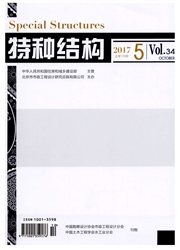

 中文摘要:
中文摘要:
风力发电机组的塔架属于高耸结构,承受风荷载和地震作用,可采用钢筒、钢格构、钢筋混凝土筒和钢一混凝土组合筒等多种结构形式。本文简要分析了各种结构形式的优缺点及研究现状,认为随着风力发电机组越来越大型化,钢塔筒面临运输和施工吊装困难。而其它形式的塔架,如钢格构、钢筋混凝土筒和钢一混凝土组合筒塔架,具有易运输、易施工的优点,已获得一定应用,并可能进一步推广。目前,对钢塔筒的研究较多,而对其它形式的塔架研究较少;并且由于叶片数据缺乏,风力发电机组承受的风、地震作用的计算不很准确;此外,研究者分析的风力发电机组数量有限,所得结论不一定具有普遍性。
 英文摘要:
英文摘要:
A wind turbine tower belongs to a high-rise structure, subjected to wind loads and the seismic action. Various structural forms, such as the steel tubular tower, the steel lattice tower, the reinforced-concrete tubular tower and the concrete-filled steel tubular tower, are possible to be adopted for the wind turbine tower. In this paper, advantage, disadvantage and the state-of-art of each structural form are briefly summarized and it is thought that. ( 1 ) the steel tubular tower becomes difficult to be transported and hoisted with wind turbines growing much larger, while other tower forms, like the steel lattice tower, the reinforced-concrete tubular tower and the concrete-filled steel tubular tower, which may be advantageous in transportation and erection, have been applied in a certain range and may be promoted in the future," ( 2 ) there are an amount of research on steel tubular wind turbine towers but not the case for other structural forms; ( 3 ) the computation of wind and earthquake actions on wind turbines is not precise, due to the lack of blade data; ( 4 ) only a limited number of wind turbines are analysed by researchers and the conclusions are not regarded as universal
 同期刊论文项目
同期刊论文项目
 同项目期刊论文
同项目期刊论文
 期刊信息
期刊信息
